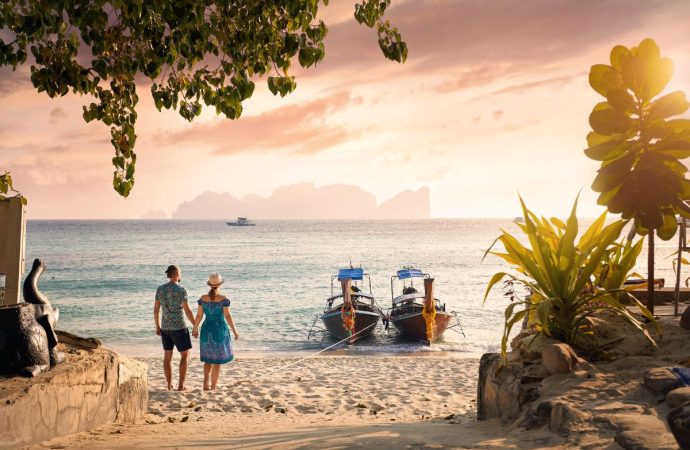Introduction Travel used to be about sights and history. Today, many travelers plan trips around food. These are called palate-led holidays. Instead of just seeing landmarks, tourists taste local dishes, visit food markets, and join cooking classes. From pasta tours in Italy to spice markets in India, culinary tourism is booming. This type of trip
Introduction
Travel used to be about sights and history. Today, many travelers plan trips around food. These are called palate-led holidays. Instead of just seeing landmarks, tourists taste local dishes, visit food markets, and join cooking classes. From pasta tours in Italy to spice markets in India, culinary tourism is booming. This type of trip lets you explore culture through taste, smell, and color. In this article, we will explore why food travel is so popular, where to go, and how to plan your own taste-centered adventure.
What Are Palate-Led Holidays?
A palate-led holiday focuses on eating and cooking experiences. It can include:
- Tasting Tours: Guided visits to farms, vineyards, or street-food stalls.
- Cooking Classes: Hands-on lessons with local chefs.
- Market Walks: Shopping for fresh ingredients in city markets.
- Food Festivals: Celebrations of regional specialties, like paella in Spain or sushi in Japan.
- Winery and Brewery Visits: Learning about wine or beer production and sampling products.
The goal is to connect with a place through its flavors. You learn local stories, traditions, and history, all through food.
Why Culinary Tourism Is on the Rise
Several factors drive the growth of gastronomic travel:
- Social Media Influence: Platforms like Instagram and TikTok showcase drool-worthy dishes. Travelers want to recreate those photos.
- Desire for Authentic Experiences: Food is a core part of culture. Eating local dishes feels more authentic than staying in a hotel.
- Growing Foodie Culture: TV shows and blogs celebrate chefs and street food alike. People follow culinary trends and want to taste them firsthand.
- Wellness and Sustainability: Many tours focus on farm-to-table dining and organic farms, aligning with eco-friendly travel.
- Post-Pandemic Travel: After lockdowns, people crave sensory experiences they missed—smelling spices, hearing market chatter, tasting fresh produce.
With these drivers, palate-led holidays have become a top choice for modern travelers.
Popular Destinations for Palate-Led Holidays
Some destinations shine for palate-led holidays:
- Italy: From pizza in Naples to truffle hunts in Piedmont, Italy’s regions each boast unique flavors. Wine tours in Tuscany and pasta-making classes in Bologna are must-dos.
- Japan: Tokyo’s sushi counters and Kyoto’s kaiseki meals offer both tradition and innovation. Take a ramen workshop or tour sake breweries in rural towns.
- Mexico: Street tacos in Mexico City, mole sauce in Oaxaca, and tequila distilleries in Jalisco make Mexico a spice lover’s dream.
- Spain: Tapas crawls in Barcelona, paella lessons in Valencia, and cider cideries in Asturias showcase Spain’s diversity.
- Thailand: Bangkok’s street-food stalls, Chiang Mai’s cooking schools, and southern spice islands deliver bold, fragrant dishes.
- France: Cheese-making in Normandy, baguette baking in Parisian bakeries, and wine tasting in Bordeaux highlight France’s gourmet reputation.
Each location has its own tasting tours and cooking experiences, making planning a pleasure.
Types of Culinary Experiences

Image by: Yandex.com
When planning a palate-led trip, consider these experience types:
- Hands-On Cooking Workshops: Learn to roll sushi or knead pasta with local chefs guiding you step by step.
- Guided Food Tours: Join small groups led by food experts who explain ingredients and cooking methods.
- Market-to-Table Dining: Shop in a market at dawn, then cook a meal in a traditional kitchen using your picks.
- Home Dinners with Locals: Eat with a family in their home for authentic recipes and storytelling.
- Restaurant Hopping: Sample signature dishes at top restaurants, guided by a local host who knows hidden gems.
- Farm and Vineyard Visits: See how ingredients are grown, then taste fresh products right at the source.
Mix and match experiences for a rich, palate-led itinerary.
How to Plan Your Palate-Led Holiday
Follow these steps for a smooth food-focused trip:
- Choose Your Destination: Think about the cuisine you love and the culture you want to explore.
- Research Local Specialties: Identify must-try dishes and where to find them—markets, street carts, or Michelin-starred spots.
- Book in Advance: Popular cooking classes and tours fill up quickly, especially in high season.
- Set a Budget: Food tours and fine dining can add up. Balance free street-food lunches with one special dinner.
- Stay Flexible: Leave time to wander markets and accept local invitations. Some of the best experiences are spontaneous.
- Learn Basic Language Phrases: Simple words like “thank you” or “delicious” make a big difference when ordering and connecting.
Good planning ensures you hit the highlights while being open to unexpected culinary delights.
Benefits Beyond Eating
Palate-led holidays offer more than tasty meals:
- Cultural Immersion: Food connects you to history, religion, and local traditions.
- Social Connections: Sharing meals with locals builds friendships and memorable stories.
- Sensory Engagement: Tasting new flavors and aromas improves mindfulness and appreciation.
- Support for Local Communities: Paying for small food tours and home dinners helps local economies.
- Skill Development: Cooking classes teach techniques you can use at home for months after the trip.
These benefits make food-centered travel rewarding on several levels.
Sustainable and Ethical Considerations
As culinary tourism grows, so does the need for responsible travel:
- Choose Eco-Friendly Tours: Look for operators who use organic farms and reduce food waste.
- Respect Local Practices: Follow customs, such as removing shoes before entering a home kitchen.
- Avoid Over-Touristed Spots: Seek out hidden markets and family-run restaurants rather than crowded tourist traps.
- Learn About Ingredients: Understand how dishes impact the environment—seafood sustainability, for example.
By traveling thoughtfully, you ensure palate-led holidays remain positive for both travelers and communities.
The Future of Palate-Led Holidays
Looking ahead, palate-led travel will evolve:
- Virtual Cooking Classes: Pre-trip online sessions to build excitement and basic skills.
- AI-Driven Food Recommendations: Apps suggesting local dishes based on your taste profile.
- Hybrid Tours: Combining in-person market walks with virtual guest appearances by top chefs.
- Health-Focused Culinary Retreats: Nutritionists and chefs team up for wellness-based cooking holidays.
- Culinary Storytelling: Interactive food history tours using AR headsets to bring traditions to life.
These trends promise to make palate-led holidays even richer and more accessible.
Conclusion
Palate-led holidays have transformed travel by putting food travel at the heart of exploration. From tasting tours in Italy to cooking classes in Thailand, these trips engage all your senses and connect you deeply to local cultures. With easy planning—choosing destinations, booking experiences early, and staying mindful of sustainability—you can craft a delicious vacation that feeds both body and mind. As culinary tourism grows, expect new tools like AI-driven recommendations and virtual previews to enhance your journey. Ready to taste the world? Plan your next adventure around its flavors and discover the joy of palate-led holidays.
















